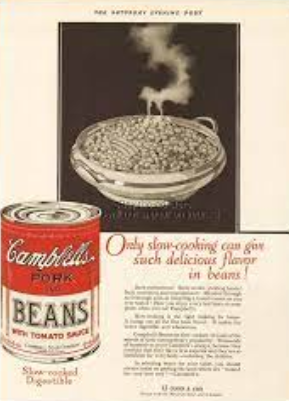The 1920’s and early 1930’s saw the rise of processed foods and with them, nifty recipes to dazzle your guests and family. From a cookbook of the day (the National Museum of American History:Tasting the 30’s:An Experiment in Congealed Salads), “Prior to the 20’s and depending on where, cooking was done from scratch and at home. With the invention of better refrigeration and the freezer, along with a shift in how food could be prepared, menus and eating habits changed.”
The basic goal was to make fancy looking entrees or sides with inexpensive ingredients. My all-time favorite recipe is the Surprise Loaf, which looks like a cake but is, in fact, made out of Wonder Bread, mayonnaise, coleslaw, and relish. Yum. It was garnished with radish rosettes and appeared in The Silent Hostess: Treasure Book, produced by General Electric in 1932.
The ever-surprising Surprise Loaf
The 20’s and 30’s saw the introduction of Baby Ruth candy bars and Wonder Bread in 1920, popsicles in 1924. Ritz Crackers, in all of their buttery goodness, were invented in 1934. Snowdrift vegetable shortening became a staple in many kitchens, replacing butter (which could become rancid). Velveeta cheese made an appearance and was touted as “the best for sandwiches!” Its benefits: melts evenly and is, well, very orange.
The key to these culinary inventions were low cost, maximum shelf life (just try and see if Velveeta ever goes bad), the addition of colored dyes, and ease of access. This is not even mentioning added sugars, processing techniques, and new packaging; the 20’s and 30’s certainly changed the way Americans ate.
These two decades also changed the way Americans prepared their food as well. Campbell Soup Company offered up pork and beans, so instead of spending two days making baked beans, the happy homemaker could just whisk a can off the shelf and heat it up. If she cleverly put it in a casserole dish and doctored it a bit with alternate ingredients, no one would be the wiser. Serve it with sugar-glazed ham and it’s a home run.
Most women welcomed these tasty, time-saving options, and why wouldn’t they? Seriously, who wants to spend hours peeling potatoes or soaking beans or thumping bread dough with the added angst of “will it even rise?”
These super-processed foods were something of a God-send to overworked women whose job it was, among other things, to put all meals on the table. Never mind the luxury of good refrigeration, small freezers, and even cake mixes; these changes in diet reduced time spent cooking and fussing around in the kitchen. One of the unintended outcomes was that, as Americans got statistically healthier due to medical advances, their diet shifted and not for the better—processed foods played a large role in that.
In our own 2024 world, we who can afford it are encouraged to return to the glory days of unprocessed food: that which is grown at home or, better yet, by a theoretically cheery organic farmer who puts in endless hours and days to bring us leafy greens at a competitive price.
Food production and culinary choices are deeply embedded in class, culture, and desire. Nonetheless, the Surprise Loaf in all its Wonder Bread glory would be a much anticipated addition to any table.
-Bird Jones




